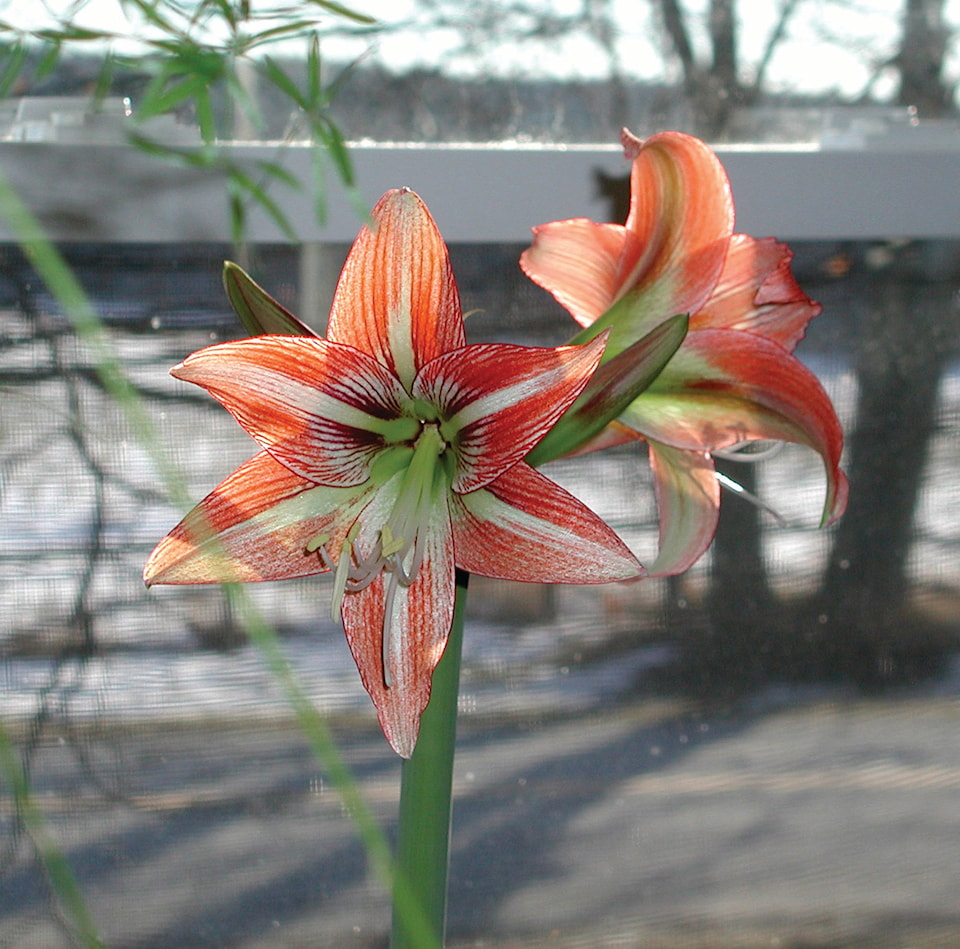Amaryllis bulbs start appearing in the stores at the end of October and last until they are all sold. For a continuous supply of flowers, buy multiple bulbs and store in a cool area (5 – 10 C), away from fruits and vegetables, and stagger planting times.
The size of the Amaryllis bulb matters. The larger bulb, the more flower stocks. Bulbs should be free of rot, cuts and other damage. Do not be too concerned with the roots as all the energy needed to produce a flower is stored in the bulb. When bulbs are given soil and water they will grow new roots which will feed the bulb to develop next year’s flowers.
Bulbs are sold as boxed sets with pots and soil, bare rooted or coated in wax.
Boxed sets are handy as nothing else is needed. Before purchasing a bulb in a package, open the package to check the size of the bulb and to make sure it is healthy. Look at the pot and soil to see if they are suitable.
When purchasing a bare rooted bulb, choose the largest, healthiest bulb available.
Wax coated Amaryllis bulbs are also available. Instead of planting the bulb in soil, it can be left in the original case or placed in a tall, heavy container.
If the plan is to plant the bulb in soil, choose a heavy pot that is slightly larger than the bulb with drainage holes. Large containers and or no drainage holes keep the soil wet and can cause the bulb to rot. Light containers tend to tip over once the plant becomes top heavy with flowers.
Plant the bottom half of the bulb leaving the top half visible.
Keep the soil slightly moist until the roots are developed and the bulb begins to sprout. At that time increase watering as needed.
Once the flower stock emerges it grows rapidly but can be slowed down by placing it in a cool area.
When the flower dies cut the stock back a couple inches (5 cm) above the bulb while leaving the leaves intact. Either discard the bulb or continue to water and fertilize the bulb until it can be set outside in a sunny location. Wax covered bulbs can be planted if the wax is removed from the bottom of the bulb allowing the roots to develop. In August or September the leaves will turn yellow and dieback. Dig up the bulb, remove the soil and store the bulb in a cool, dark location. Take the bulb out of cold storage after 10 – 12 weeks or when it sends out shoots. Replant the bulb and enjoy the flowers.
Amaryllis bulbs produce lovely large flowers and are the easiest bulbs to force which makes them an ideal flowering houseplant.
Linda Tomlinson is a local horticulturalist that can be reached at your_garden@hotmail.com.
